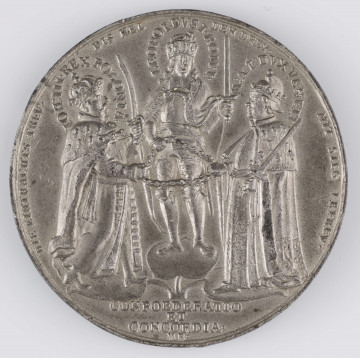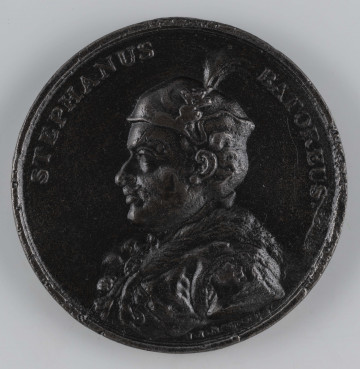
Alliance against the Turks
1684
National Museum in Lublin
Part of the collection: Polish medallic art from the 16th to the 17th c.
The 17th century saw important events. Most of them were connected to the wars fought at that time. Among the battles related to the actions of Polish troops, undoubtedly the most famous in Europe was the battle with the Turks, which resulted in liberating the imperial city of Vienna from siege. The Victory of Vienna reverberated throughout the Christian world. Therefore, it is not surprising that the event was eagerly commemorated. In Poland, many works were created, including medals, depicting the event or John III Sobieski. It was no different in the territories ruled by Emperor Leopold I. It was decided to celebrate the victory also in rich Hamburg. The presented medal designed by Jan Reteke was created on that occasion. Significantly, the emphasis in Germany was mainly on the contribution of the imperial army to the victory, but also John III Sobieski and the Polish-Lithuanian Army of the Republic of Poland were honoured. The creator of the medal was born in Riga, probably in 1643, as a son of the medallist Jan Rethe. Initially, he worked in Stockholm, but he settled permanently in Hamburg, where he dealt mainly with designing the so-called portugals, i.e. multi-ducat gold coins. They were imitations of Portuguese coins issued since 1499. For that reason, he received the nickname of the Creator of Portugals. The specific character of these coins, which were more an expression of the financial power of Hamburg than a means of payment - was the reason why they were called Portuguese medals until the 19th century. The experience gained in their design made Jan Reteke exceptionally well suited to the role of the creator of the medal documenting the Vienna Victory.
Interestingly, the subject of the medal is not the only element linking Jan Reteke with Poland. In Hamburg, he briefly contacted Sebastian Dadler, a medal maker, who developed his full talent during his almost fifteen-year stay in Gdańsk. Thus, young Jan Reteke became a disciple of the Gdansk medaller, whom he later eagerly imitated and even copied. Thus, Jan Reteke should also be counted among the so-called Danzig Medallic School initiated by Sebastian Dadler, to which Jan Höhn the Elder and his son Jan Höhn the Younger also belonged.
Leszek Poniewozik
Author / creator
Dimensions
cały obiekt: width: 58 mm
Object type
medal
Technique
stamp minting
Creation time / dating
Creation / finding place
Owner
The National Museum in Lublin
Identification number
Location / status

1684
National Museum in Lublin

1792 — 1797
National Museum in Lublin

1764
National Museum in Lublin
DISCOVER this TOPIC
National Museum in Lublin
DISCOVER this PATH
Educational path